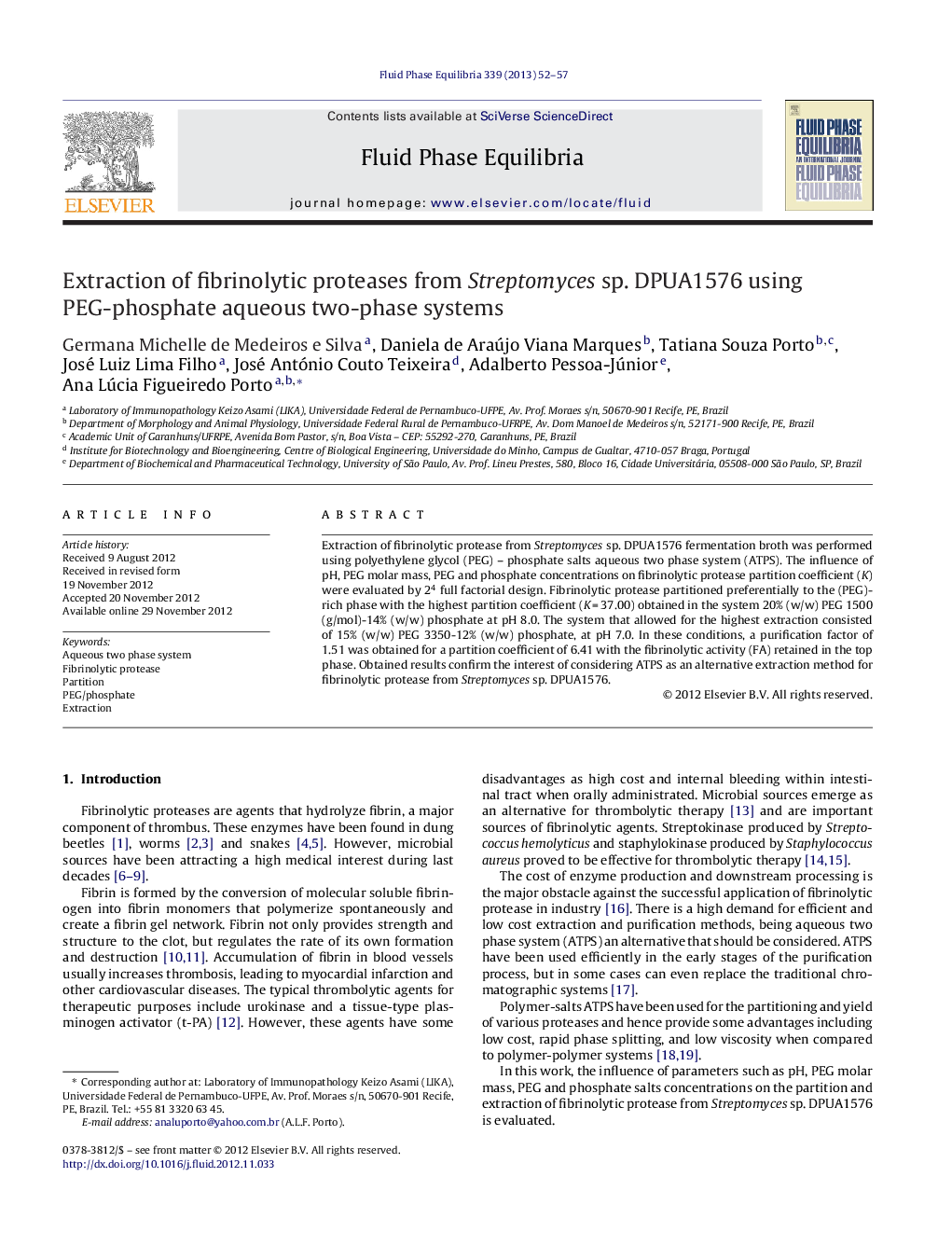| Article ID | Journal | Published Year | Pages | File Type |
|---|---|---|---|---|
| 201749 | Fluid Phase Equilibria | 2013 | 6 Pages |
Extraction of fibrinolytic protease from Streptomyces sp. DPUA1576 fermentation broth was performed using polyethylene glycol (PEG) – phosphate salts aqueous two phase system (ATPS). The influence of pH, PEG molar mass, PEG and phosphate concentrations on fibrinolytic protease partition coefficient (K) were evaluated by 24 full factorial design. Fibrinolytic protease partitioned preferentially to the (PEG)-rich phase with the highest partition coefficient (K = 37.00) obtained in the system 20% (w/w) PEG 1500 (g/mol)-14% (w/w) phosphate at pH 8.0. The system that allowed for the highest extraction consisted of 15% (w/w) PEG 3350-12% (w/w) phosphate, at pH 7.0. In these conditions, a purification factor of 1.51 was obtained for a partition coefficient of 6.41 with the fibrinolytic activity (FA) retained in the top phase. Obtained results confirm the interest of considering ATPS as an alternative extraction method for fibrinolytic protease from Streptomyces sp. DPUA1576.
► Extraction of fibrinolytic proteases by aqueous two phase system using statistical design. ► Fibrinolytic protease extraction was partitioned preferably to the top phase of PEG-phosphate ATPS. ► PEG molar mass and phosphate salts concentration were the most important variables that influenced on the enzyme partition coefficient. ► ATPS are a potential alternative method for fibrinolytic protease extraction.
